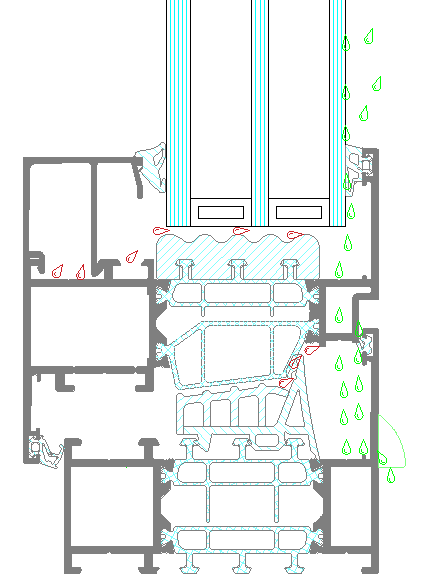Probleemstelling:
Buildings are a significant contribution to our energy usage, which can be reduced by high-quality insulation. Consequently, research and development is continuously ongoing to improve the thermal insulation of all building components, including windows. To provide sufficient insulation, window frames typically have a cross section consisting of multiple chambers (see Figure 1), formed by connecting several components. However, deformations can occur due to the weight of the window or the installation process, which can cause small openings (less than 1mm) between these components. A small amount of water can then enter the frame through these gaps, so dedicated openings are foreseen in the frame design to drain this water. Unfortunately, experimental observations show that the water does not always follow the expected path, especially not with a high pressure difference (about 1200Pa) over the window. In experiments, small amounts of water are sometimes found at unexpected locations in the frame. It is assumed that this is the result of the air flow through the frame which entrains the water droplets/films that are present in the frame.

Figure 1: Cross section of a window frame, with in green the expected path of water and in red the observed path.